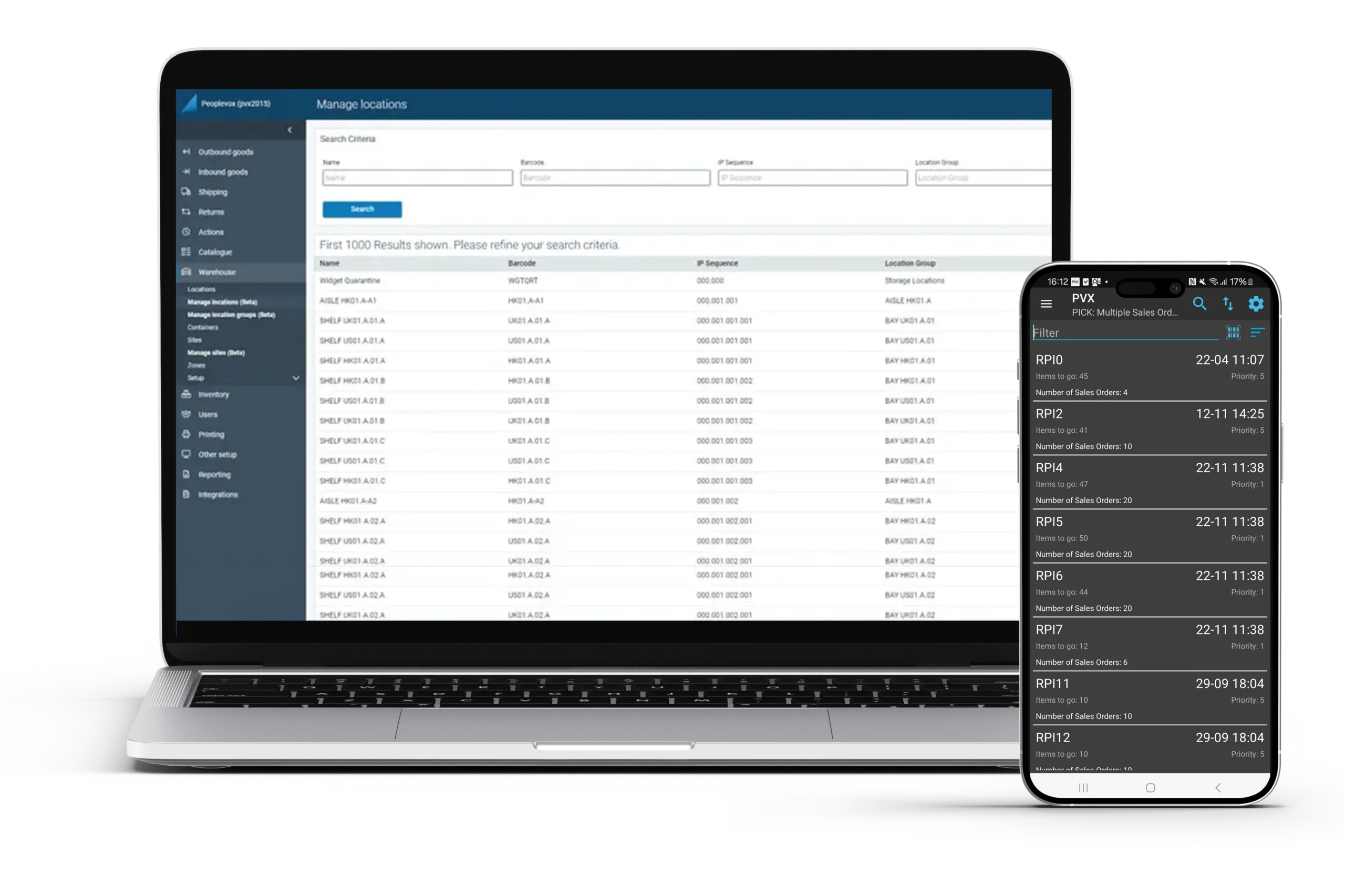How Much Does an Ecommerce Warehouse Management System Cost?
A cloud-based ecommerce warehouse management system (WMS) typically costs £75–£370 ($100-$500 USD) per user/month, plus a one-time implementation fee of £9,000–£32,000 ($11,000-$43,000 USD). An on-premise enterprise WMS often costs £2,000–£160,000+ ($2,700-$216,000 USD) per site, plus ongoing support fees.
Like many business-critical platforms, WMS pricing varies depending on your operations, user count, sales volumes, and how you want the system delivered. This guide walks through what goes into warehouse management system cost and what ecommerce businesses can expect when budgeting for a cloud-based WMS.
Cloud vs. on-premise WMS pricing
Most modern ecommerce businesses choose cloud-based WMS software for its speed, scalability, and ease of maintenance. Here’s how pricing differs:
Cloud-based WMS (SaaS)
- Pricing model: Subscription (monthly or annual)
- Includes: Hosting, updates, security, support
- Typical cost: £75–£370 ($100-$500 USD) per user/month, plus a one-time implementation fee of £9,000–£32,000 ($11,000-$43,000 USD)
- Who it’s for: Fast-scaling ecommerce brands that want low overhead and flexibility


On-premise WMS
- Pricing model: One-time license + annual maintenance fees
- Requires: Internal IT support, infrastructure, manual updates
- Typical cost: £1,900–£145,000+ ($2,500-$200,000 USD) per site
- Who it’s for: Enterprise-level operations seeking full control
Examples of cloud-based warehouse management system cost
All pricing examples are in USD and may change at any time.
| Software | Monthly license fee | 1-time implementation fee |
|---|---|---|
| Deposco | Unavailable on website | Unavailable on website |
| Descartes OzLink™ | $600–800 (2–5 users) | $5,000–7,500 |
| Descartes Peoplevox | From $2,050 (5 users) | From $11,600 |
| Descartes pixi™ | Unavailable on website | Unavailable on website |
| Descartes Sellercloud | From $1,199 (unlimited users) | Unavailable on website |
| Extensiv | Unavailable on website | Unavailable on website |
| Logiwa | Unavailable on website | Unavailable on website |
| ShipHero | Unavailable on website | Unavailable on website |
| Snapfulfil | Unavailable on website | Unavailable on website |
Other costs to plan for
A WMS investment includes more than just software licences. Key cost areas are:
Implementation & onboarding fees
You’ll work with a delivery team to plan, configure, test, and launch your WMS. This typically includes:
- Discovery and warehouse process mapping
- Playbook configuration for mobile workflows
- Remote training for staff
- Go-live support
Typical cost: £9,000–£32,000 ($11,000-38,000 USD) depending on complexity and site count


Development costs for integrations
Connecting your new WMS to ecommerce platforms, enterprise resource planning (ERP), and shipping systems may involve development costs, usually included in base pricing.
Complex integrations and customization may require scoped projects with additional fees:
- API connections
- Prebuilt connectors (e.g. Shopify, NetSuite)
- Custom workflows and middleware
Be sure to request a custom quote that includes integration with all your other systems.
Ongoing support plans
Support levels and costs vary. For example, Descartes offers free live support for all customers through our account management team and technical support desk. This covers everyday needs.
Some warehouse management systems offer paid plans for ongoing support. For businesses that want a dedicated customer support representative with a certain number of hours per month, support subscriptions are available.

Ecommerce WMS cost breakdown
Here’s an example of what pricing might look like for a single-site ecommerce brand using the Descartes Peoplevox ecommerce WMS:
| Component | Cost estimate |
|---|---|
| Setup & implementation | From £9,000 ($11,600 USD) (one-time) |
| Platform subscription | From £2,000/month ($2,050 USD) (5 users) |
| Additional users | From £200/month ($235 USD) per user |
| Optional modules | From £200/month ($235 USD) |
All prices are indicative and vary by customer size, scope, and region.
How to budget for a WMS
When planning your WMS investment, estimate both the short-term costs of implementation and the long-term return on investment.
Ask yourself:
How many staff will need access?
Estimate how many user seats to buy.
Do we need multi-site capabilities?
Estimate support/training costs.
What platforms do we need to integrate with?
Request a custom quote.
Who internally will lead the rollout?
Identify a project lead or internal champion who can guide the rollout.
What inefficiencies are costing us money today?
Calculate cost vs. benefit.
Final thoughts
A WMS is a strategic investment — one that should pay off in speed, accuracy, and scalability. But costs can vary, so it’s important to ask detailed questions during the buying process to understand what you’re paying for, how you can achieve ROI, and what ongoing support you’ll receive.

